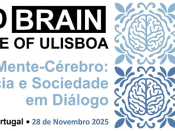Por Margarida Cruz (Centro de Física Teórica e Computacional e Departamento de Física, Faculdade de Ciências, Universidade de Lisboa, Portugal).
The carbon nanotube (CNT) is one of the nano-allotropes of carbon. Due to the remarkable mechanical and electrical properties presented by this system, it has been the subject of many investigations aimed at practical applications and is already present in modern technology. CNT are described as composed of coaxially rolled graphene sheets and designated according to the rolling geometry as armchair, zigzag or chiral. One or more overlapping sheets can be found in the carbon cylinder and single-walled carbon nanotube (SWCNT) have some properties that differ from multi-walled carbon nanotube (MWCNT). Another important issue is the nature of CNT chemical composition. Being an all-carbon material, CNT presents hydrophobicity and a great affinity for other hydrophobic organic components. It is this property that is intended to be explored in the present project, namely the use of carbon nanotubes for water purification through the recovery of microplastics and nanoplastics.
In this presentation I will give an overview of CNT and the strategy chosen for their application in plastic recovery. It involves the preparation of a composite combining CNT and magnetic nanoparticles to allow easy recovery of the material and contaminants it can capture, as well as establishing ways to recycle the nanocomposite to enable its reuse. A more controlled magnetic manipulation of CNTs is proposed for the future, which would provide a way to organize them, for example, creating meshes with controlled nanospacing.



















